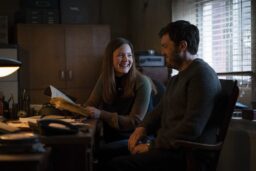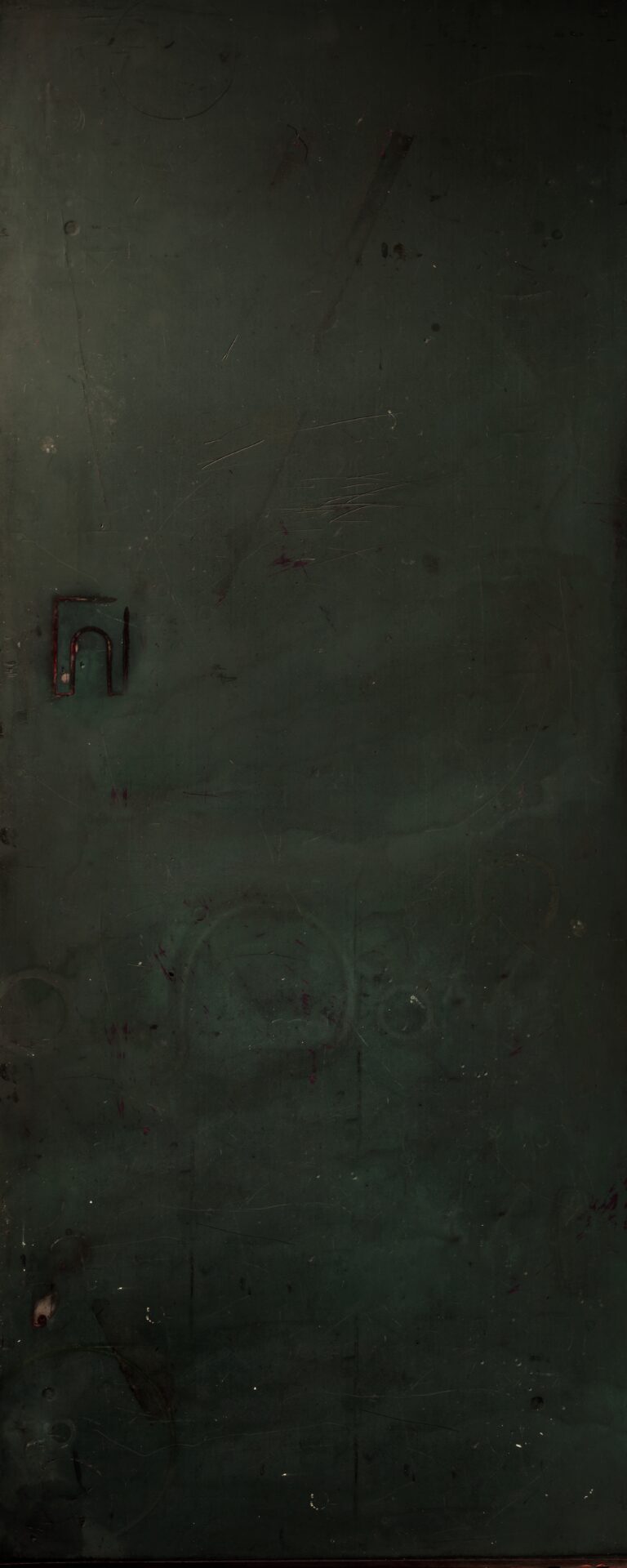Folklore, Magic and Witches in Strike
She went to the bar, where she waited beneath the hanging skulls and fake cobwebs. The barman had painted his face like Frankenstein’s monster.
Troubled Blood, Robert Galbraith
The murder investigations that Robin and Strike are drawn into always have very human causes, but that doesn’t mean the detectives don’t occasionally brush up against the supernatural. Strike, having been brought up in a fog of mysticism by his mother, Leda, might be ‘Team Rational’, but Robin is more sympathetic to old fears and the beliefs that have grown up around them. In the spirit of Halloween, then, here are some of the times the detectives have found themselves encountering witches, folklore and magic in their investigations and the beliefs of the people they encounter, and even, occasionally, met with a hint of divine intervention in their own lives.
Witches
When they reached the clearing, Robin saw that night had turned the derelict cottage into a witch’s lair. It was easy to imagine figures lurking behind the cracked windows and, telling herself firmly that the situation was quite creepy enough without imagining fresh horrors, she turned away from it.
Lethal White, Robert Galbraith
The old cottage where Billy and Jimmy Knight were brought up might look like a witch’s cottage, but it’s on Robin’s second undercover mission during their investigations into the Chiswell family (Lethal White) that she finds herself surrounded by black candles and pentagrams. Working in a Wiccan shop, she serves an elderly witch looking for a ceremonial blade. Robin is frustrated rather than afraid during the encounter though, as the witch’s difficultly in deciding between athames, means Robin misses an opportunity to share confidences with her target, Flick.
While trying to discover what happened to GP Margot Bamborough, who went missing almost forty years ago (Troubled Blood), Robin and Strike learn that the original investigator, DI Bill Talbot believed he had encountered a witch. He wrote in his notes that Wilma Bayliss, the cleaner of the surgery where Margot worked was a ‘radical feminist witch’, and even questioned Wilma’s daughter, Eden, about ‘obeah’ which is the kind of magic practised in the Caribbean, originating in West Africa. The fact that Eden and her sisters were born in Southwark did nothing to remove Talbot’s racist assumption that her family were all black pagans. For all that, Strike begins to see in Talbot’s occult notebook the last desperate effort of a good detective trying to salvage clues from chaos as madness took hold of him. He was wrong about the witchcraft, and didn’t need to scatter salt outside the bedroom doors of his children to keep away evil spirits, but he was right about some things. Wilma was hiding something, and other crucial facts are hidden under the strange symbols, drawings, and jottings in Talbot’s notebook.
Witches also make an appearance as the detectives battle to find the killer of artist Edie Ledwell (The Ink Black Heart). Kea Niven, former girlfriend of the hit cartoon’s co-creator Josh Blay, claims that the inspiration for Harty, the star of the cartoon, came from her. The story she told Josh was of Margaret Read, a witch whose heart, it is said, exploded from her body when she was executed in Kings Lynn in 1590. When Strike manages to speak to Kea he is attacked, not by witches, but by a man-hating cockatoo.
Mazu stood before her as the demon of fairy tales, the witch in the gingerbread cottage, mistress of agony and death, and she stirred in Robin the shameful, primitive fears of childhood.The Running Grave, Robert Galbraith
While investigating the Universal Humanitarian Church though, Robin confronts a woman who many think has the power of a sorceress – Mazu Wace, wife of the founder of the UHC, Jonathan (The Running Grave). A dishonest user of the I-Ching system, claiming a heritage she has no right to, and controlling church members through fear, trickery and manipulation, Mazu may not have supernatural powers, but that does not make her any less terrifying as an enemy.
Folklore
‘I said, they’re supposed to be bad luck, aren’t they?’ repeated Strike, as they drove away from the pub.
Lethal White, Robert Galbraith
‘What are?’
‘White horses,’ he said. ‘Isn’t there a play where white horses appear as a death omen?’
During the investigation into the Chiswell family (Lethal White), Robin needs a moment of privacy while undercover and finds herself in the crypt of the House of Commons. Strange faces peer down at her out of the moulding, like the wild Green Man of myth, and in the jewel-box like space heraldic and pagan imagery mingle with angels and crosses. It is a place which harks back to an age of superstition, magic and feudal power, appropriate for the case in which she and Strike are now involved. The marker Robin finds of most significance to her as she juggles the demands of her marriage and her vocation, is not the Green Man, but the small hidden plaque marking the spot where Emily Davison spent the night while campaigning for votes for women.
The Uffington White Horse, a bronze age carving on the chalk slope above Dragon Hill, is the presiding spirit over Robin and Strike’s investigations into the Chiswells whose grand house lies nearby. No one knows why the horse was carved into the hillside, though antiquarians have made various suggestions over the years. Billy Knight, the disturbed young man who bursts into the detective’s office as the case begins, carves it into the door of the house where he is confined, and what he witnessed when dragged up to the horses’s eye as a child by a group of partying teenagers has haunted him ever since.
The local legend which inspired the teenagers’ trip is relatively benign. It’s said that if you turn round three times in the eye of the horse and make a wish, it is sure to come true. Strike would probably agree that you are more likely to damage the ancient monument rather than win the lottery.
The white horse haunts the investigation in other ways. Lethal White syndrome, which means a foal can’t digest properly, seems to be the subject of a haunting painting on the wall of the faded drawing room in Chiswell House, and Strike notes that white horses are a symbol of death in a play he mentions. The play is probably Rosmersholm by Henrick Ibsen, which supplies the chapter epigraphs and ends with the deaths of its tortured protagonists in the presence of a white horse. The final line of the play, ‘the dead woman has taken them’ seems perfect for Halloween.
‘A small, luminous figure was standing motionless in the middle of the field Robin had so often crossed by night, wearing a limp white dress. She shone brightly for a few more seconds, then vanished.’
The Running Grave, Robert Galbraith
Folklore is also a current in the belief system of the Universal Humanitarian Church (The Running Grave). The corn dollies, and more complicated Norfolk lanterns the members of the church make from straw, have their roots in practices which grew up around harvest time, when shapes were woven from the last sheafs and kept through winter.
The church has also created its own legends and lore about the founding of the church and its early years which are honoured and perpetuated during the ‘manifestations’ of the church’s prophets. Robin, undercover at the farm, witnesses the terrifying manifestation of the Stolen Prophet and afterwards doubts if she can convey to Strike just how frightening the Manifestation has been: the pitch darkness pierced by two spotlights, one trained on Mazu, in her blood red robes, the mother-of-pearl fish gleaming on its cord around her neck, the other on a towering straw figure which speaks, and thrashes around on the end of a rope.
The spirit of the Drowned Prophet, Daiyu, the young daughter of Jonathan and Mazu Wace who died as a child, regularly manifests in the temple and around the farm. She also haunts members who leave the church and dare to speak up against it. Kevin Pirbright, an ex-member trying to warn people about the church, feels her presence all around him, and says before his death, if anything happens to him it will be her who has harmed him. Another ex-member, Flora, saw the Drowned Prophet floating outside her window after she spoke to a journalist. Strike and Robin may be convinced the church members have been the victims of tricks and illusions, but as Robin knows, the terror inspired is real.
Magic
‘Yes,’ said Deborah, but then, after a moment or two, she said, ‘but maybe he did kill her, because he could do magic.’
Troubled Blood, Robert Galbraith
Bill Talbot is not the only person connected with the Margot Bamborough case who believed he could perform magic (Troubled Blood). Gwilherm Athorn told people that he killed Margot with his powers, a claim repeated by his agoraphobic wife Deborah, and son Samhain. Gwilherm died long ago, and his wife and son keep his ashes in their flat under an Egyptian ankh, the symbol of eternal life, drawn on the wall by Guilherme himself. Samhain proudly shows Strike the book he has inherited from his father, The Magus by Francis Barrett, which is a collection of ceremonial magic written in 1801. Samhain, who shares his name with the Gaelic festival marking the end of harvest and arrival of winter on 1 November, tells Strike you can do magic with it. Strike is more interested in what looks like a blood stain on one of the pages, and realises though Samhain is proud of the book, he cannot read it. Samhain does learn some magic in the end though, when Sam Barclay teaches him a trick as thanks for letting him and Robin investigate their flat.
Police detective Richard Anstis claims that Strike himself has magical powers, naming him Mystic Bob after Strike saved his life, pulling him to safety just before the IED explosion which cost Strike his leg. As the search for the killer of Owen Quine (The Silkworm) reaches a climax, Strike has again a sense of certain danger he recognises from that moment, which might be called intuition, but he knows it to be the subconscious joining of dots and reading of subtle signs.
Divine Intervention
But sometimes coincidences do seem to show a certain magic at work. Even Strike interprets the blow on the head he gets from a low beam after he meets Nina Lascelles (The Silkworm) as a divine clout on the head, and it is only because of a medium and a chance encounter in Cornwall that he and Robin become involved in the Margot Bamborough case at all. Perhaps the most important sign though was when Robin was sent, by mistake, to an office in Denmark Street.
The name on the paper beside the outside buzzer was engraved on the glass panel: C. B. Strike, and, underneath it, the words Private Detective… For this to happen today, of all days! It felt like a wink from God.
The Cuckoo’s Calling, Robert Galbraith




